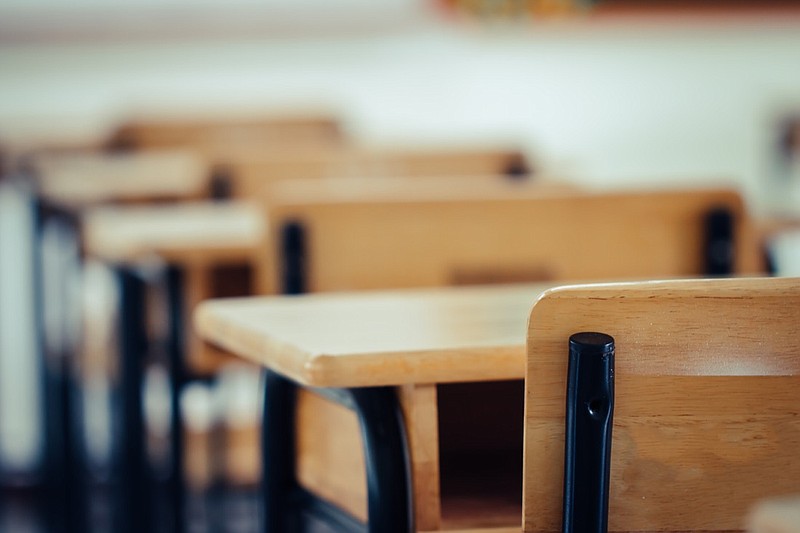The problem with labels -- as though there's only one problem -- is that they often fail miserably in communicating accurate information.
CRT, or critical race theory, for example, once meant something specific, but it's become shorthand for almost any educational discussion about race and slavery that might make someone uncomfortable or challenge their preconceived notions. At least in political culture, it has developed into a meaningless term, except that it's something people are supposed to be scared of.
It's understandable that people want to put labels on complex ideas. How does one even speak about such complexities if it has to be fully defined in every mention? But label it and critics find a quick and easy way to start blurring the lines between what it is and what it isn't. Pretty soon, the definition has been eroded so much that the label can be whatever anyone wants it to be.
"Restorative justice" is one of those terms. In educational settings around the country, restorative justice has been tried as a way to respect the value of education for all -- including those who disrupt it through their poor behaviors.
For some, such an approach is an unrealistic, kum-ba-yah fantasy born of a feeling that everyone can just get along if schools just create the right environment. For others, it's an earnest devotion to pursuing harmony by addressing root causes of troubling behaviors.
Is it possible, though, that an all-out devotion to the idea that no child will be left behind has harmful effects for entire classrooms?
Take the instance of the 6-year-old Virginia boy who recently shot his 25-year-old teacher in the classroom. According to the teacher's lawsuit against the district, school administrators were told on four different occasions that the boy possibly had a gun and had bragged about it to other kids. Administrators took no action, denying one teacher's request to search the boy's pockets, the injured teacher's lawyer reported.
This all took place amid questions that school administrators were ineffective in responding to disciplinary problems within the school, often ignoring teacher concerns.
Justice can't be restored when educators bury their heads in the sand, desiring to avoid conflict.
A little more than a week ago, this newspaper carried an Associated Press story detailing the intensified problems with student behaviors in the wake of the educational disruptions necessitated by the pandemic.
A National Center for Education Statistics survey of school leaders last summer, the AP reported, found that 56% of respondents said the pandemic led to increased classroom disruptions from student misbehavior and 48% said it led to more acts of disrespect toward teachers and staff.
Efforts that prioritize keeping disruptive kids in the classroom -- rather than sent home through suspension or expulsion -- put teachers at wit's end. And entire classrooms of students pay the price, as their learning becomes secondary to preserving a disruptive student's presence.
The charge is school boards, superintendents and other administrators have become too lenient, to the detriment of the educational atmosphere of their schools.
Is it the fault of restorative justice, as some parents and others in Gwinnett County, Ga., claimed after concerns over school incidents? That school district's leaders have "paused" the restorative practices after a video showed a student assaulting a teacher at a high school.
Our best guess -- and it's a guess -- is that whatever restorative practices were adopted were half-measures and poorly implemented. Undoubtedly, suspending or expelling every kid who creates a disruption cannot be a sustainable approach. Society doesn't need more uneducated people. But it may be asking too much for a rank-and-file teacher to overcome the disruptive forces swirling around a student's life at home without sacrificing the teaching he or she is there to do for the other 25 or 30 kids.
Expulsions and suspensions can't work, either, by themselves. Students come back and nothing has been accomplished as far as equipping the student to better handle life's stresses. Counseling is vital. But what happens too often is school boards adopt feel-good policies without a commitment of resources to make them work. Too often, the responsibility just lands on already overloaded educators.
Disruptive students should not be sacrificed by just removing them from schools, but school systems need robust, well-funded responses to (1) remove the disruption first then (2) explore and address the root causes behind the disruptive student's behaviors. This allows other students to continue their educational pursuits and, eventually, can help a troubled student reintegrate successfully.
Luke-warm efforts at "restoration" are not sufficient to preserve school safety and good learning environments. But that's too often what's at play in the nation's school systems, where educators should know: Ignored troubles rarely go away.
What’s the point?
School systems must not burden teachers and other students by failing to fully tackle the actions of disruptive students.

